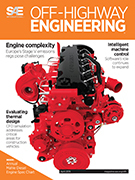Standard
Cybersecurity Guidebook for Cyber-Physical Vehicle Systems
2016-01-14
HISTORICAL
J3061_201601
This recommended practice provides guidance on vehicle Cybersecurity and was created based off of, and expanded on from, existing practices which are being implemented or reported in industry, government and conference papers. ...Other proprietary Cybersecurity development processes and standards may have been established to support a specific manufacturer’s development processes, and may not be comprehensively represented in this document, however, information contained in this document may help refine existing in-house processes, methods, etc. ...This recommended practice establishes a set of high-level guiding principles for Cybersecurity as it relates to cyber-physical vehicle systems. This includes: Defining a complete lifecycle process framework that can be tailored and utilized within each organization’s development processes to incorporate Cybersecurity into cyber-physical vehicle systems from concept phase through production, operation, service, and decommissioning.



